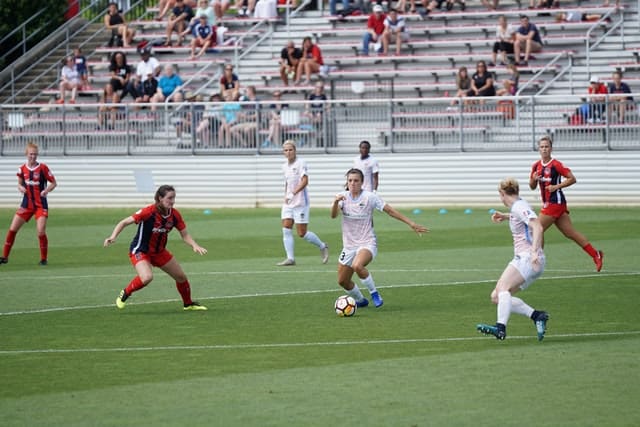If you have been following soccer for a while, you may have heard or read the saying that goes as follows:
“Whoever controls the Midfield controls the game”
In other words, if a team’s midfield players are skilled enough and have great chemistry among each other, then they’ll be able to dominate the pace of the game and they’ll give their team more chances to score.
But what exactly do midfielders do during a soccer game?
A midfielder’s main job in soccer is to dominate the pace of the game and create more chances for their team in order to score goals. During a soccer match, the midfielders are responsible for transitioning their team from a defensive state to an offensive state. In other words, midfielders balance between the defense and the attack depending on which team has the ball.
Depending on the soccer formation used by the team’s coach, you will usually find 3 to 5 midfielders per team during a soccer game. The roles of these midfielders vary depending on the type of midfield role that they are assigned.
So, in order to exactly understand what the midfield players do, we first need to explore the type of midfielders in soccer and then explain what each of them does on the field.
There are 5 types of soccer midfielders
- Central Midfielder
- Wide Midfielder
- Defensive Midfielder
- Attacking Midfielder
- Winger
These types of midfielders collectively are responsible for both preventing their opponents from reaching the defense, and assisting their forward players and helping them score goals against the opponent.
Here is more info about the job of the players of each of these midfield positions.
1- What do central midfielders do in soccer?
Central midfielders are the players who are required to defend their net when their team does not have the ball, and assist their attack when their team has the ball. They remain close to the center of the soccer field during most of the game.
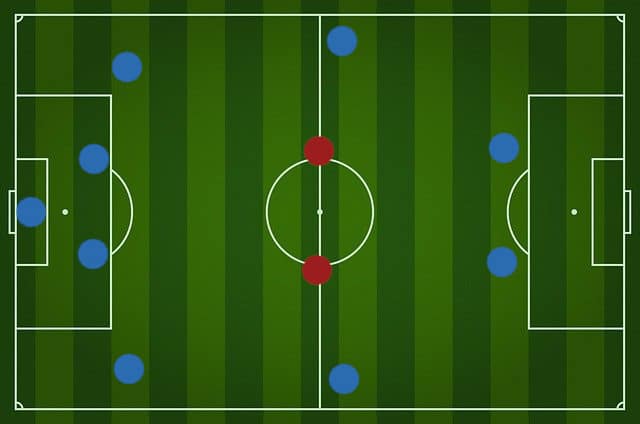
These players are responsible for getting the ball from their defense players, and passing it to the forward players or any other player who is in a great position to receive the ball and score a goal.
The central midfield players will usually make short passes among themselves and other midfield players until one of these midfielders gets the chance to pass the ball to a forward player who is in a good position to score.
When the team does not have the ball, the central midfield players will act as defenders and they’ll attempt to block the attack of their opponent the moment it begins.
For example, if the opponent team has the ball on their side of the field, then the central midfielders may decide to advance forward and press their opponent in order to extract the ball from them.
If the opponent team has managed to cross the middle of the field however, then the central midfielders will move back towards their own side of the field and they’ll act as the first line of defence against the opponent.
2- What do wide midfielders do in soccer?
Wide midfielders in soccer have many similarities with the central midfielders. However, instead of standing in the center of the field, the wide midfielders stand close to the sidelines of the middle of the field.
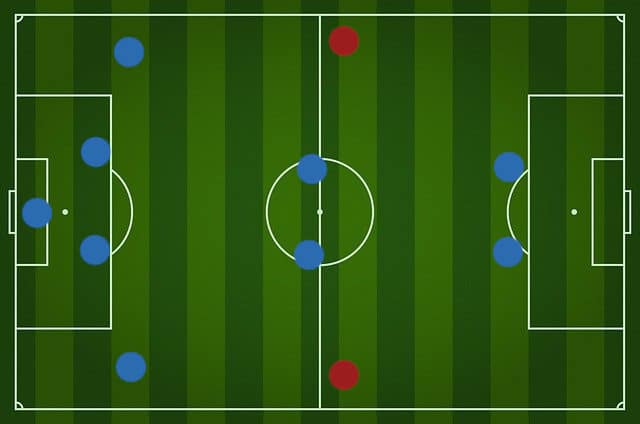
The wide midfielders stand closer to the sidelines of the field in order to defend against the wingers of their opponent team. The opponent’s wingers will attempt to penetrate by running on the sidelines of the field, however, when they do, they’ll find the wide midfielders attempting to block them.
So, wide midfielders also have defensive roles but instead of defending the center of the field, they defend the sidelines.
When their team has the ball, the wide midfielders will also attempt to pass the ball towards their forward players.
The difference between wide midfielders and central midfielders is that the wide midfielders usually advance deeper inside the opponent’s side of the field then they have the ball. They advance forward from the sidelines and they attempt to cross the ball towards their forward players and hope that they score.
In other words, the wide midfielders usually act as wingers when their team has the ball (more about wingers below), and they run back to defend their team when they do not have the ball.
3- What do defensive midfielders do in soccer?
Defensive midfielders have one of the most underrated roles in soccer (personal opinion). The defensive midfielders are one of the most important players on the field when it comes to dominating a soccer game.

A defensive midfielder is a midfielder that usually stands behind the central midfielders and they prioritize their defensive roles over their attack roles.
While a central midfielder can decide to advance forward towards their opponent’s net, a defensive midfielder usually does not do that and they usually remain close to their team’s side of the field in order to defend their net when their team loses the ball.
But why are the defensive midfielders very important?
If the team loses the ball and a counter attack is initiated by the opponents, the central midfielders and the wide midfielders might not have enough time to move back and resume their defensive roles, so this is where the defensive midfielder comes in.
The defensive midfielders will try to delay the attack of the opponent in order to give more time for the other midfielders to come back and defend their net. The defensive midfielders will also join the Centre-defense players and help them defend the net if the opponent manages to reach the penalty area of the team.
However, the defensive midfielders’ role isn’t always to defend the net. When their team has the ball. The defensive midfielders are responsible for changing the direction of the attack of their team in a matter of seconds.
For example, if the midfield players on the right side of the field are having a hard time penetrating their opponent, then they can attempt to pass the ball back to their defensive midfielder who in turn immediately passes the ball to the midfielders or the forward players on the other side of the field.
In other words, the defensive midfielders usually adjust their team’s attack attempts and they defend their team when the opponent has the ball.
4- What do attacking midfielders do in soccer?
Attacking midfielders are the midfielders that play on the opponent’s side of the field during most of the game. These midfielders might attempt to score goals from long distances and they might attempt to dribble past their opponent’s defense in order to score.
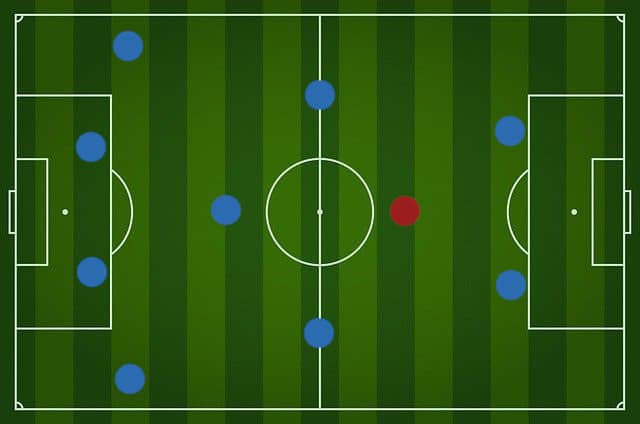
The attacking midfielders can be viewed as the link between the central midfielders and the forward players.
In other words, the attacking midfielders receive the ball from their central midfielders and they attempt to pass the ball to their forward players for them to score, or they might attempt to score goals themselves.
Attacking midfielders usually do not take a lot of defensive roles when their team does not have the ball, but when the opponent’s defense players have the ball, the attacking midfielders usually attempt to press them and take the ball from them.
If the attacking midfielders manage to steal the ball from their opponent’s defense, then they’ll have a great chance of scoring since they’ll most likely find themselves in a one vs one situation with the goalkeeper.
5- What do wingers do in soccer?
Usually, wide midfielders are also referred to as wingers. However, wingers have their own position name since they prioritize attack over defense more than the regular wide midfielders do.
A winger is either a midfield player or a forward player whose job is to run on the sidelines of the field towards the opponent’s net and cross the ball to their teammates inside the penalty area whenever they get the chance to.
Many soccer coaches require that their wide midfielders act as wingers only when their team has the ball. However, some coaches ask their wide midfield players to only play as wingers. Meaning that these players will not always attempt to move back to a defensive position when they lose the ball, instead they should wait for their team to extract the ball from the opponent and quickly pass it to them so that they give less time for the opponent to react.
So in simple words, a midfield winger is a wide midfielder who prioritizes their offensive role over their defensive role during a soccer game.
With that said, you now understand exactly what midfielders do during a soccer game. However before I end this article, I’d like to list a few traits that are required for a midfielder to excel during a soccer game.
What makes a good soccer midfielder?
1- Accurate long passes.
Since the midfield players are required to pass the ball to the forward players to score a goal, then they need to be exceptionally good at long passes since they will be attempting a lot of them.
Many midfielders will attempt to make a long pass from the middle of the field to somewhere close to the opponent’s penalty area. If these midfielders know how to do that accurately, they’ll put their teammates in a great position to score goals.
2- Strong and accurate kicks
Attacking midfielders usually attempt to score goals from long distances when they feel like they have a good chance to score. If a player wants to score from somewhere outside the penalty area, they need to kick the ball with enough strength or else it will be super easy for the opponent’s goalkeeper to block the goal attempt.
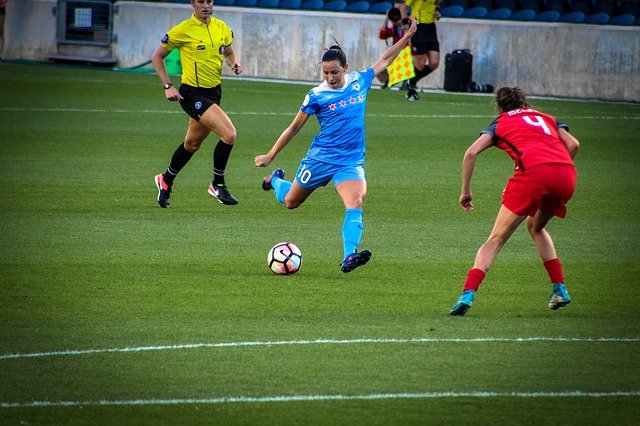
So, strong and accurate kicks are a must especially for attacking midfielders since many of their goal attempts will be attempted from a long distance.
3- Great vision.
A soccer player’s vision is their ability to make passes that do not seem possible at a first glance.
Since midfielders need to put their forward players in great positions to score, they have to have great vision and they need to pass the ball to their forward players in ways that their opponent can’t predict.
4- Great dribbling skills
Dribbling is a fantastic skill to have for attacking midfielders. Since attacking midfielders usually attempt to score goals themselves, their good dribbling skills can make them easily penetrate the remaining defense of their opponent and land the ball in the net.
There are many other skills that midfield soccer players should have including great tackling skills, high agility, high endurance, and so much more.
With that said, I will end my article here. Here’s a quick summary of what you have just read.
SUMMARY.
Midfield players are the players who assist the forward players when the team has the ball, and assist the defense players when the team does not have the ball.
Some midfielders (the attacking midfielders and the wingers) are required to priorities the attack while other midfielders are required to priorities the defense (defensive midfielders). As for the central midfielders, these players balance between both the attack and the defense depending on whether their team has the ball or not.

